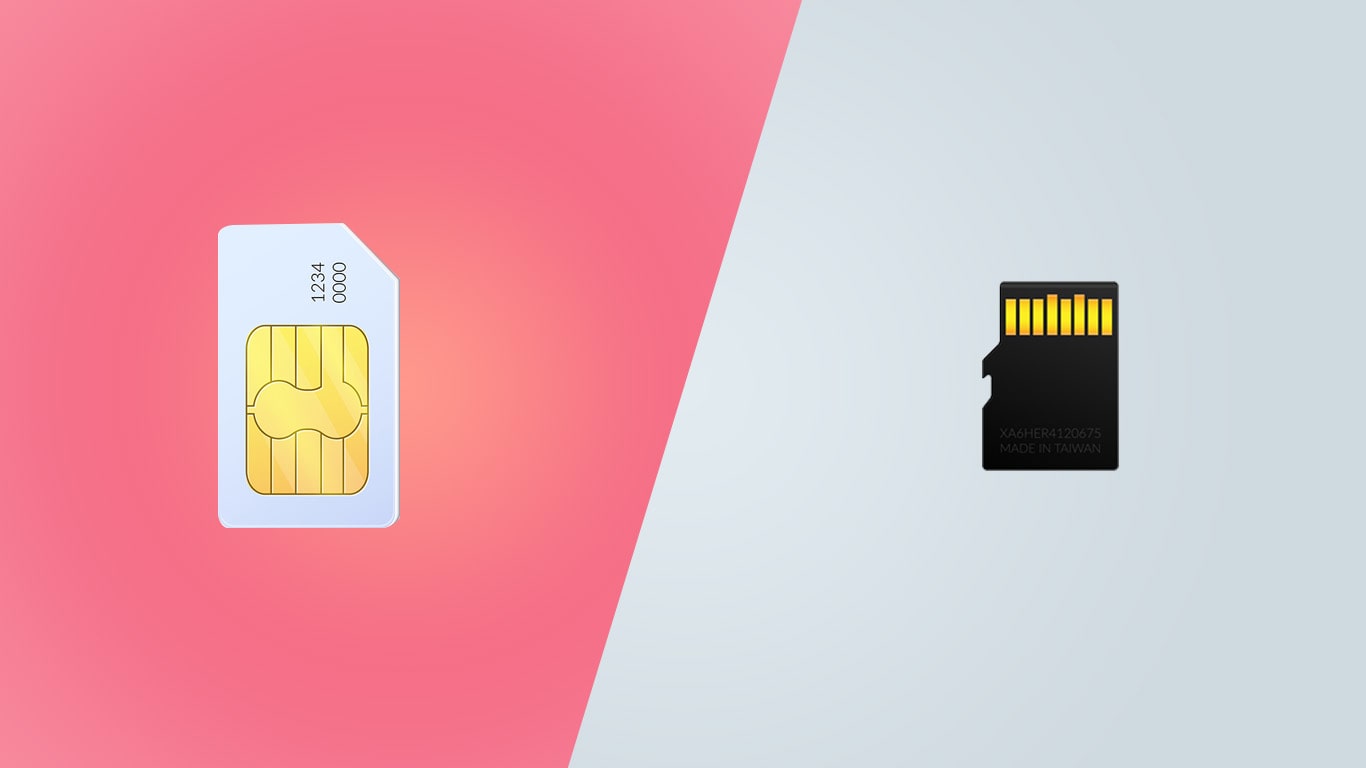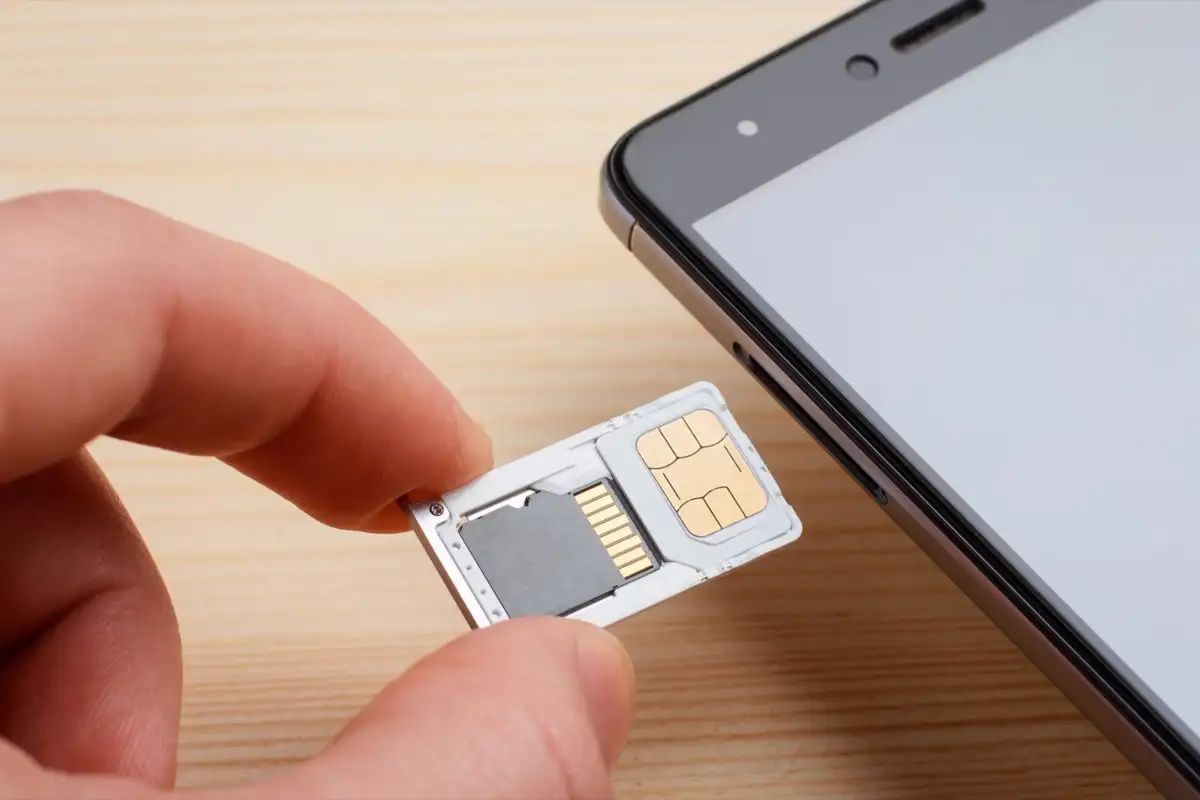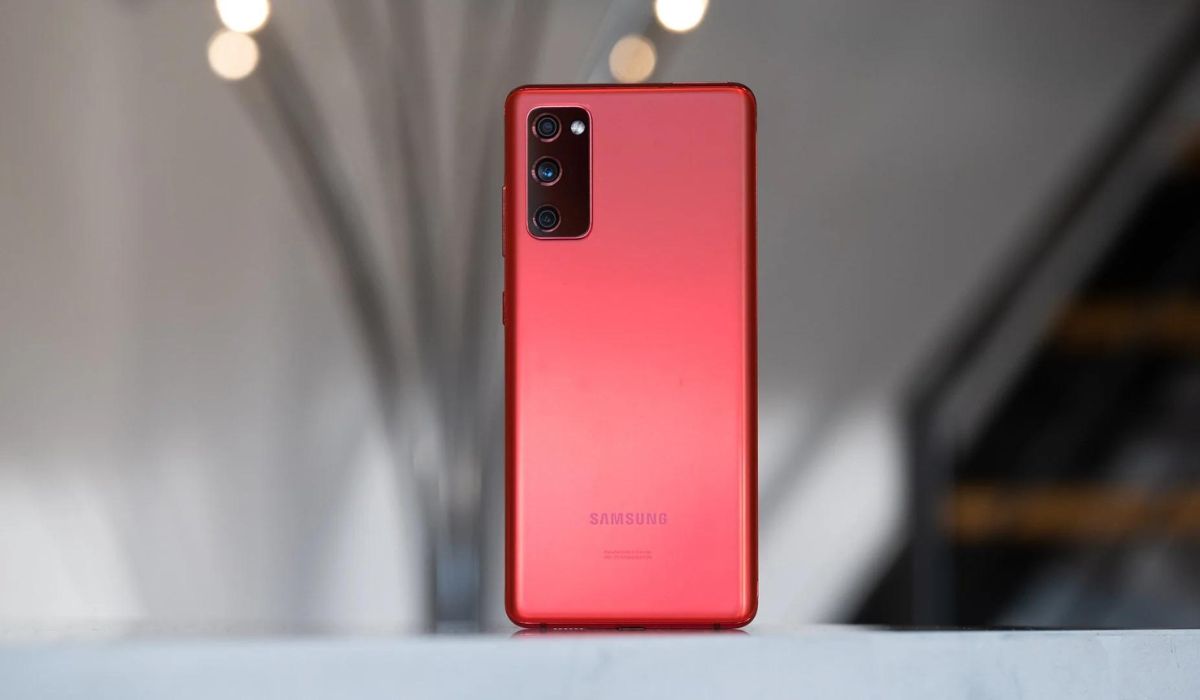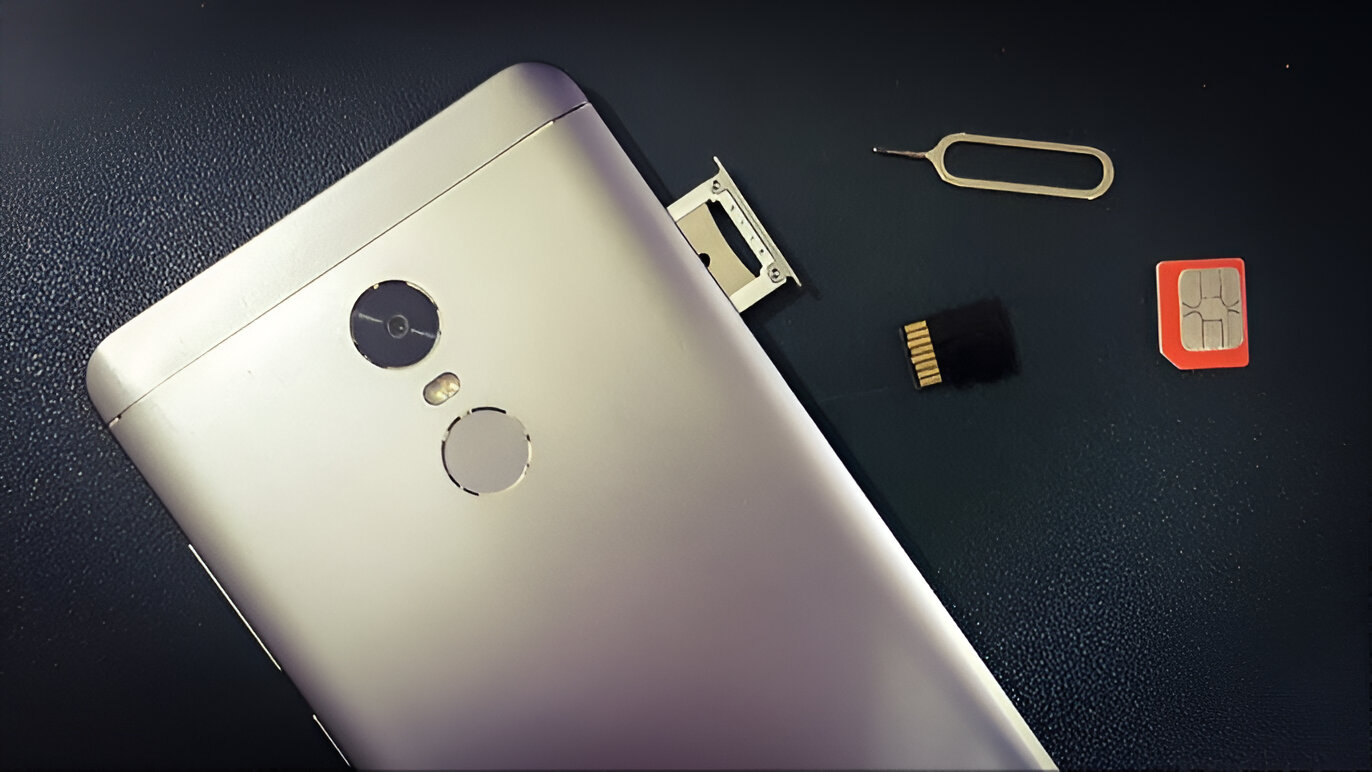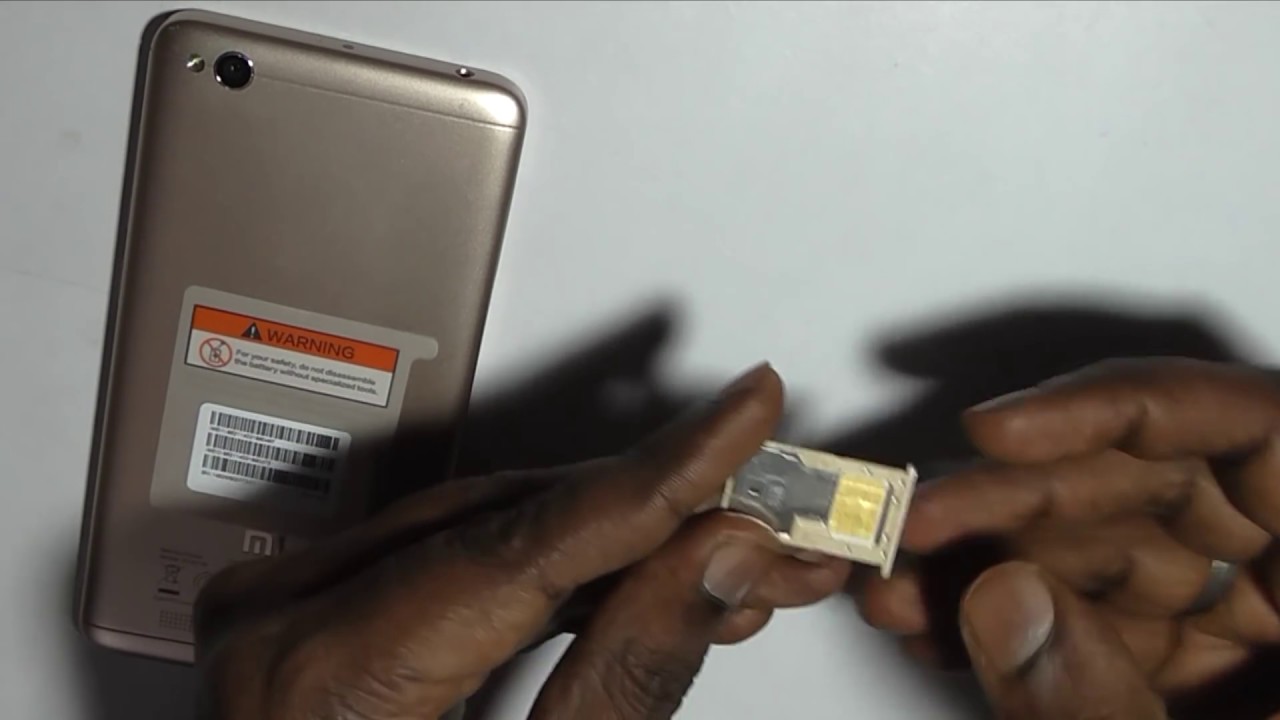Introduction
When it comes to modern technology, we often encounter terms such as SIM card and SD card. While they may sound similar, they serve different purposes and play distinct roles in the functions of our devices. Understanding the difference between a SIM card and an SD card is crucial for anyone who uses mobile phones, tablets, or other electronic devices that require these tiny yet vital components.
A SIM (Subscriber Identity Module) card is a small integrated circuit that is inserted into mobile phones or other devices to enable them to connect to a cellular network. It contains unique information associated with the user, such as their phone number, network authorization details, and personal data like contacts and messages. In simpler terms, a SIM card essentially identifies and authenticates the user on a mobile network.
On the other hand, an SD (Secure Digital) card is a storage medium used specifically for expanding the memory capacity of electronic devices. It is commonly found in devices such as smartphones, cameras, and tablets. An SD card allows users to store and transfer various types of data, including photos, videos, documents, and applications, providing additional space beyond the device’s built-in memory.
While both SIM cards and SD cards are small, portable, and easily insertable components, their functionalities and purposes diverge significantly. In the following sections, we will explore the specific differences between SIM cards and SD cards, including their size and design, storage capacity, data usage, compatibility with devices, removability and transferability of data, security features, and price range.
What is a SIM Card?
A SIM (Subscriber Identity Module) card is a small, removable integrated circuit that is inserted into mobile phones, smartphones, or other devices that require cellular network connectivity. It serves as a unique identifier for the user, enabling them to connect to a specific mobile network and access voice calls, text messages, and mobile data.
A SIM card contains crucial information associated with the user, such as their phone number, network authorization details, and personal data like contacts and messages. This data is securely stored on the SIM card and can be easily transferred between devices by removing and re-inserting the SIM card.
The primary function of a SIM card is to authenticate the user on a mobile network. When a user inserts a SIM card into a device and connects to a network, the SIM card interacts with the network’s authentication servers to establish a secure connection. This validation process ensures that the user is authorized to use the network and enables them to access network services.
In addition to authentication, SIM cards also play a vital role in managing the user’s mobile subscription. They contain information about the user’s mobile plan, account balance, and other network-specific details. The SIM card acts as a gateway between the user and the network, allowing them to make and receive calls, send and receive text messages, and consume mobile data within the parameters of their subscription plan.
Another important aspect of SIM cards is their ability to store personal contacts and messages. Users can save their phone contacts on the SIM card, making it convenient to transfer their contact information to a new device by simply transferring the SIM card. Similarly, text messages can be stored on the SIM card, ensuring that important messages are not lost when switching devices.
Over the years, SIM cards have evolved in terms of technology and design. The traditional SIM card, known as a “mini SIM,” has given way to smaller form factors such as “micro SIM” and “nano SIM,” which are used in more modern devices. These smaller SIM card sizes allow manufacturers to create devices with sleek designs and maximize the available space within the device.
In the next section, we will explore the functionalities and characteristics of an SD card, shedding light on the differences between the two types of cards and their respective uses.
What is an SD Card?
An SD (Secure Digital) card is a small, portable storage device used to expand the memory capacity of electronic devices such as smartphones, cameras, tablets, and even some computers. It offers users a convenient way to store and transfer various types of data, including photos, videos, documents, and applications.
SD cards are designed with solid-state flash memory technology, making them reliable and durable for storing data. They come in different storage capacities, ranging from a few gigabytes (GB) to several terabytes (TB), allowing users to choose the size that best suits their needs.
The primary purpose of an SD card is to provide additional storage space for devices that have limited built-in memory. This is particularly useful for devices such as smartphones and cameras, where users often capture high-resolution photos and videos that consume a significant amount of storage.
SD cards are compatible with a wide range of devices that support SD card slots or utilize SD card adapters. They can be easily inserted into the appropriate slot, expanding the device’s memory instantly. This flexibility allows users to transfer data between devices, whether it’s moving photos from a camera to a computer or sharing files between different smartphones.
One advantage of using an SD card is its portability. Since SD cards are small and lightweight, users can carry them around conveniently, making it easy to access and transfer data on the go. This portability also makes SD cards an ideal choice for devices that may require frequent data exchange, such as digital cameras used by professional photographers.
Furthermore, SD cards can be easily removed and swapped between different devices, making them a versatile storage solution. Users can simply remove the SD card from one device and insert it into another device that supports SD cards, allowing them to access and use the stored data across multiple devices.
SD cards also offer different speed classes, denoted by symbols such as “Class 2” or “UHS-I.” These speed classes indicate the minimum write speed of the SD card, which can be crucial for applications such as recording high-definition videos or running data-intensive apps.
In addition to the standard SD cards, there are also miniSD and microSD cards, which are even smaller in size and widely used in mobile devices. These smaller variants are often used in smartphones and tablets where space is at a premium.
Next, we will delve into the functionalities and differences between SIM cards and SD cards, allowing you to understand their distinct purposes and how they complement each other in the world of technology.
Functionality and Purpose
While both SIM cards and SD cards are small, portable electronic components, they serve different functionalities and purposes.
The main functionality of a SIM card is to authenticate the user on a mobile network and provide access to network services such as voice calls, text messages, and mobile data. It contains unique identification information associated with the user, allowing them to connect to a specific network and utilize the services provided by their mobile plan.
On the other hand, the primary purpose of an SD card is to expand the storage capacity of electronic devices. By inserting an SD card into a compatible device, users can store and transfer various types of data, including photos, videos, documents, and applications. SD cards offer additional space beyond the built-in memory of the device, empowering users to store more files and media without worrying about limited storage.
In terms of functionality, SIM cards are integral to the communication capabilities of mobile devices, enabling users to make calls, send messages, and access mobile data. SD cards, on the other hand, enhance the versatility and usability of electronic devices by providing additional storage space, allowing users to store and access their important files and media.
It is important to note that while SIM cards are essential for the network connectivity and functionality of mobile devices, SD cards are not mandatory for the basic operation of electronic devices. Devices can still function without an SD card, using their built-in memory, but an SD card offers a convenient solution for expanding storage capacity.
Each card serves a specific purpose and can exist independently of the other. However, they can also complement each other in certain scenarios. For example, a SIM card containing contacts and messages can be transferred to a new device along with an SD card that carries all the personal photos and videos. This allows users to easily migrate their important data from one device to another seamlessly.
Understanding the functionality and purpose of SIM cards and SD cards is crucial in order to leverage their capabilities effectively. By having a clear understanding of how these components work, users can make informed decisions when it comes to choosing the right SIM card for their mobile plan or selecting the appropriate SD card that suits their storage requirements.
Next, we will delve into the differences between SIM cards and SD cards when it comes to their size and design.
Size and Design
When it comes to size and design, SIM cards and SD cards differ significantly due to their distinct purposes and technological requirements.
SIM cards come in various sizes, with the most common being the traditional “mini SIM” or “1FF” (1st Form Factor) size. It measures approximately 25mm x 15mm, making it larger than both microSD and nano SIM cards. However, with the advancement of technology, smaller SIM card sizes have emerged to accommodate the demand for slimmer and more compact devices.
The microSIM (3FF) and nanoSIM (4FF) sizes were introduced to fit into smaller devices such as smartphones and tablets. The microSIM measures approximately 15mm x 12mm, while the nanoSIM measures even smaller, around 12.3mm x 8.8mm. These smaller SIM card sizes have become the industry standard, particularly with the widespread use of smartphones and the need for more space-efficient designs.
On the other hand, SD cards are available in different sizes and form factors. The standard SD card, often called “SDSC” (SD Standard Capacity), measures approximately 32mm x 24mm. It is commonly used in devices such as digital cameras, camcorders, and some older smartphones and tablets.
In recent years, smaller variants of SD cards have gained popularity due to the demand for compact storage solutions. The microSD (micro Secure Digital) card, also known as “microSDHC” or “microSDXC,” has become the most widely used size for portable electronic devices, including smartphones, tablets, and action cameras. It measures a mere 15mm x 11mm, making it significantly smaller than the standard SD card.
An even smaller variant is the nanoSD card, which was introduced by a few smartphone manufacturers to further reduce the storage card’s physical footprint. The nanoSD card, measuring approximately 12.3mm x 8.8mm, is even smaller than the microSD card and intended specifically for specific smartphone models.
In terms of design, both SIM cards and SD cards have a similar flat, rectangular shape. However, they have unique features and notches that ensure they can only be inserted in one orientation, preventing incorrect insertion and potential damage to the card or device.
The different sizes and designs of SIM cards and SD cards reflect the need for adaptability and compatibility with various electronic devices. The smaller form factors of SIM cards and SD cards allow manufacturers to create sleeker and more compact devices, while still providing essential functionalities and expandable storage options.
Next, we will explore the storage capacities of SIM cards and SD cards, highlighting their differences and capabilities.
Storage Capacity
When it comes to storage capacity, SIM cards and SD cards have distinct capabilities and limitations due to their different functions and technical specifications.
SIM cards primarily store essential information related to the user’s mobile network connectivity and personal data, such as contacts and messages. As a result, the storage capacity of a SIM card is relatively limited compared to an SD card. Typically, SIM cards have a capacity ranging from 16 KB to 512 KB. While this may not seem like much, it is sufficient to store the necessary data required for network connectivity and basic personal information.
In contrast, SD cards offer significantly larger storage capacities, providing users with ample space to store various types of data, including photos, videos, applications, and documents. The storage capacity of an SD card can range from a few gigabytes (GB) to multiple terabytes (TB), depending on the specific model and technology used.
SD cards are available in different storage capacity options to cater to different user needs. For example, you can find SD cards with capacities of 8 GB, 16 GB, 32 GB, 64 GB, 128 GB, 256 GB, 512 GB, and even higher. The choice of storage capacity depends on the user’s requirements, such as the volume of data they need to store and the nature of the files they plan to store.
Furthermore, SD cards often follow specific standards, such as SDHC (Secure Digital High Capacity) and SDXC (Secure Digital eXtended Capacity). These standards determine the maximum storage capacity a card can support. SDHC cards typically have capacities up to 32 GB, while SDXC cards can go beyond 32 GB, reaching several terabytes (TB).
It’s important to note that, unlike SIM cards, which primarily store network-related information and personal data, SD cards are designed specifically for data storage and can be used interchangeably among different devices that support SD cards.
Overall, SD cards offer a much larger storage capacity compared to SIM cards, making them a preferred choice for users who need to store a significant amount of data, whether it’s for media files, applications, or other types of files.
Next, we will discuss the differences in data usage between SIM cards and SD cards, highlighting their respective functionalities and limitations when it comes to data storage and transfer.
Data Usage
When it comes to data usage, SIM cards and SD cards have different functionalities and limitations due to their distinct purposes and technical capabilities.
With a SIM card, data usage refers to the consumption of mobile data provided by the user’s mobile network plan. SIM cards enable users to access the internet, send and receive emails, browse websites, use social media apps, stream videos, and more. The amount of data that can be consumed depends on the user’s mobile plan and the specific data limits set by the network provider.
Simultaneously, SD cards do not directly impact data usage since the primary function of an SD card is to provide additional storage space. However, SD cards play a crucial role in managing and storing data-intensive files such as high-resolution photos, videos, and large applications. By having sufficient storage capacity on an SD card, users can capture more photos and videos, download and save larger files, and install more applications without worrying about the limitations of the device’s built-in memory.
It is important to note that while SIM cards allow users to access and consume mobile data, SD cards do not provide internet connectivity or data access on their own. Instead, SD cards serve as a storage medium for data that is already available on the device or transferred from other sources.
When it comes to data transfer, SIM cards have limitations in terms of the types and sizes of data that can be transferred. SIM cards primarily transfer basic personal data such as contacts and messages, making it convenient for users to switch devices while retaining their essential information. However, due to their limited capacity, SIM cards are not suitable for transferring larger files like photos or videos. In such cases, SD cards offer a more practical solution as they can store and transfer a wider range of data types and sizes between devices.
In summary, SIM cards enable users to access mobile data provided by their network plan, while SD cards offer expanded storage capacity to manage data-intensive files. SIM cards focus on network connectivity and personal data transfer, while SD cards focus on data storage and transfer. By understanding the data usage capabilities of both SIM cards and SD cards, users can effectively manage their data needs and choose the appropriate storage solution accordingly.
Next, we will explore the compatibility of SIM cards and SD cards with different devices, highlighting their interoperability with various electronic devices.
Compatibility with Devices
When it comes to compatibility with devices, both SIM cards and SD cards have distinct characteristics and interoperability with different electronic devices.
SIM cards are designed for mobile devices that require cellular network connectivity, such as smartphones, feature phones, tablets, and some portable hotspots. They are compatible with devices that have a SIM card slot or tray, allowing users to insert the SIM card and establish a connection with their mobile network.
Most modern smartphones and tablets have built-in SIM card slots that support the smaller microSIM or nanoSIM sizes. Some older devices may still use the traditional mini SIM size, which is less common nowadays. It is important to ensure that the device and the SIM card are compatible in terms of size and technology, as this determines whether the card can be securely inserted and function properly in the device.
SD cards, on the other hand, have broader compatibility among various electronic devices. They are commonly used in devices such as smartphones, tablets, digital cameras, action cameras, drones, portable gaming consoles, audio players, and some computers. SD cards are designed to fit into SD card slots or can be used with the help of SD card adapters, which makes them versatile and widely compatible.
In terms of compatibility, most devices that support SD cards are equipped with a standard SD card slot. However, for smaller devices such as smartphones and tablets, the commonly used size is the microSD card. Manufacturers often provide dedicated slots or hybrid slots that can accommodate both a SIM card and an SD card, allowing users to expand storage while having mobile connectivity.
Additionally, SD cards are compatible with devices that support higher-capacity storage, such as SDHC and SDXC standards. Therefore, it is important to check the device’s specifications and ensure compatibility with the desired SD card capacity and speed class.
Furthermore, the interoperability between SIM cards and SD cards extends to their transferability between devices. Users can easily remove the SIM card from one device and insert it into another compatible device, allowing them to access their network connectivity and personal data seamlessly. Similarly, SD cards can be removed from one device and inserted into another device with an SD card slot, enabling users to access their stored data across different devices.
Understanding the compatibility of SIM cards and SD cards with various devices is crucial to ensure their proper usage and functionality. By considering the compatibility factors, users can make informed decisions when choosing devices and managing their SIM cards and SD cards.
Next, we will explore the removability and transferability of data between SIM cards and SD cards.
Removability and Transferability of Data
The removability and transferability of data is an important aspect when comparing SIM cards and SD cards, as it determines the ease of managing data and transitioning between devices.
SIM cards are designed to be easily removable and transferable between compatible devices. Users can simply remove the SIM card from one device and insert it into another device with a SIM card slot. This feature allows users to switch devices while retaining their mobile network connectivity and personal data associated with the SIM card, such as contacts and messages.
When transferring a SIM card, it’s important to ensure compatibility between the SIM card size and the SIM card slot of the target device. For example, if a user is transitioning from a smartphone with a nanoSIM card to a device that supports only microSIM cards, they may need to use an adapter or obtain a new SIM card with the appropriate size.
On the other hand, SD cards offer similar removability and transferability, allowing users to easily move their data between devices. With the use of an SD card reader or by transferring the SD card directly, users can access their stored photos, videos, documents, and applications on different devices that support SD cards.
The ability to remove and transfer an SD card is particularly useful in scenarios such as upgrading to a new device or sharing files with others. Users can simply remove the SD card from one device and insert it into another device, allowing them to access the saved data without the need for complex data transfer processes or reliance on cloud storage.
However, it’s important to consider compatibility in terms of supported file systems and formats when transferring data between devices. Different devices may have varying compatibility with specific file types or file systems, which could affect the readability and accessibility of the data stored on the SD card.
Both SIM cards and SD cards provide the convenience of easy removal and transferability of data, allowing users to quickly and seamlessly transition between devices while retaining their important data and settings. This flexibility enables users to have more control over their data and avoid the hassle of manual data transfers or reliance on cloud-based services.
Next, we will explore the security features found in SIM cards and SD cards, highlighting the measures taken to protect user data.
Security Features
Both SIM cards and SD cards incorporate security features to protect user data and ensure the integrity of the information stored on the cards.
SIM cards offer several security measures to safeguard user information and prevent unauthorized access. One of the key security features is the use of a PIN (Personal Identification Number) code. Users are required to enter their PIN code to unlock the SIM card and gain access to the network. This protects against unauthorized use of the SIM card if it is lost or stolen.
In addition to the PIN code, SIM cards also support various encryption protocols to secure communications between the device and the mobile network. These encryption protocols ensure that data transmitted over the network is encrypted and cannot be easily intercepted or decrypted by unauthorized parties.
Another security feature found in SIM cards is the ability to remotely lock or erase the card in case of theft or loss. Users can contact their mobile network provider to disable or block the SIM card to prevent unauthorized access to their network services and personal data.
SD cards also incorporate security features to protect the data stored on the card. One such feature is the use of the CPRM (Content Protection for Recordable Media) technology, which provides copy protection for content stored on SD cards. CPRM prevents unauthorized copying and redistribution of copyrighted material.
In addition, SD cards often support secure file systems, such as the exFAT (Extended File Allocation Table) file system. This file system includes security measures to protect data from unauthorized access and corruption, providing a more secure environment for storing files.
It’s important to note that while SIM cards have built-in security features related to network authentication and protection, SD cards primarily focus on content protection and file system security. The level of security provided by SD cards may vary depending on the specific features supported by the card and the device’s implementation of those features.
By incorporating these security features, SIM cards and SD cards offer users a certain level of protection for their data. However, it is always advisable to take additional precautions, such as setting strong PIN codes, regularly updating software and firmware, and utilizing additional security measures provided by the device or third-party applications.
Next, we will explore the price range of SIM cards and SD cards, providing an overview of their cost considerations.
Price Range
When it comes to price, there are differences between SIM cards and SD cards due to their functionalities, storage capacities, and the technological advancements involved.
SIM cards are typically provided by mobile network providers when users sign up for their services. In many cases, network providers offer SIM cards for free or at a minimal cost as part of their subscription plans. The cost of a SIM card may be bundled into the overall service package, which includes voice calls, text messages, and mobile data. However, if users need to obtain a new SIM card separately, the price can range from a few dollars to around $20, depending on the provider and the specific plan or promotions available.
On the other hand, SD cards vary in price depending on their storage capacity, speed class, and brand. Generally, higher-capacity SD cards are more expensive than lower-capacity ones. The price range for SD cards can start from a few dollars for lower-capacity cards like 16 GB or 32 GB and can go up to several hundred dollars for high-capacity cards with capacities of 1 TB or more. The speed class of an SD card can also impact its price, with higher speed class cards typically commanding a higher price.
Additionally, the brand and reputation of the manufacturer can also influence the price of SD cards. Well-known and reputable brands tend to offer higher-quality products, often accompanied by slightly higher price tags. However, it is worth noting that the price of SD cards has decreased over time as technology has advanced and storage capacity has increased.
When considering the price of SIM cards and SD cards, it’s important to evaluate the specific needs and requirements of the user. SIM cards are typically tied to mobile network services, and the associated costs are part of the overall subscription plan. SD cards, on the other hand, are stand-alone storage solutions that can be purchased separately.
Ultimately, the price of both SIM cards and SD cards should be weighed against the value they provide in terms of network connectivity, data storage, and convenience. Users should consider factors such as storage capacity, speed, and compatibility with their devices when determining the most appropriate and cost-effective option.
Next, we will summarize the key differences and considerations between SIM cards and SD cards.
Conclusion
In conclusion, SIM cards and SD cards serve distinct purposes and play vital roles in the functionality of our devices. While SIM cards are primarily used for network authentication and mobile connectivity, SD cards expand the storage capacity of electronic devices. Understanding the differences and characteristics of these two types of cards is essential for effectively managing our devices and data.
SIM cards are crucial for mobile devices, allowing users to connect to a cellular network, make calls, send messages, and access mobile data. They store network-specific information and personal data, serving as a gateway to network services. SIM cards are easily removable and transferable between devices, making it convenient for users to switch devices while retaining their network connectivity and personal data.
SD cards, on the other hand, provide additional storage space for devices that have limited built-in memory. They are compatible with a wide range of devices, including smartphones, tablets, cameras, and more. SD cards allow users to store and transfer various types of data, such as photos, videos, documents, and applications, enhancing the versatility and usability of electronic devices.
Both SIM cards and SD cards have their own security features to protect user data. SIM cards use PIN codes for authentication and employ encryption protocols to secure network communications. SD cards incorporate content protection and secure file systems to prevent unauthorized access and protect the data stored on the card.
When it comes to price, SIM cards are often provided by network providers as part of their subscription plans. SD cards vary in price depending on their storage capacity, speed class, and brand, ranging from a few dollars to several hundred dollars.
In summary, SIM cards and SD cards are essential components that fulfill specific functions in our devices. SIM cards enable network connectivity and personal data storage, while SD cards expand storage capacity. By understanding the differences and considering factors such as compatibility, storage capacity, and security features, users can make informed decisions when it comes to their mobile communication and storage needs.







